Themed collection 2021 Green Chemistry Hot Articles

Ionic liquids for renewable thermal energy storage – a perspective
This Perspective discusses the evolution and promise of the emerging application of ionic liquids for renewable thermal energy storage.
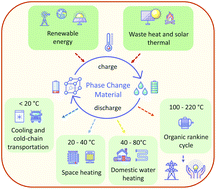
Green Chem., 2022,24, 102-117
https://doi.org/10.1039/D1GC03420K
Transition pathways towards net-zero emissions methanol production
The race to decarbonize our energy systems has led to significant advancement in technologies for harvesting renewable energy, carbon capture and conversion.
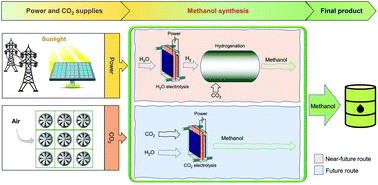
Green Chem., 2021,23, 9844-9854
https://doi.org/10.1039/D1GC01973B
Biocatalysis in ionic liquids: state-of-the-union
This perspective reviews the current status and prospects of biocatalysis in ionic liquids.
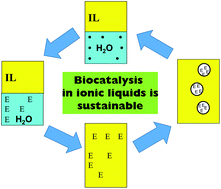
Green Chem., 2021,23, 8406-8427
https://doi.org/10.1039/D1GC03145G
Chemical energy storage enables the transformation of fossil energy systems to sustainability
The enormous dimensions of sustainable energy transitions and their overarching systemic nature require adequate responses from chemical science.
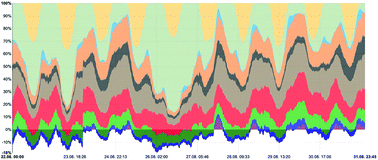
Green Chem., 2021,23, 1584-1593
https://doi.org/10.1039/D0GC03171B
Research progress on the preparation and application of biomass derived methyl levulinate
The research works on preparation and application of biomass derived methyl levulinate were summarized. The problems, corresponding solutions, and future research directions in this field were proposed.

Green Chem., 2021,23, 9254-9282
https://doi.org/10.1039/D1GC03474J
Porous organic polymers as metal free heterogeneous organocatalysts
This review addresses the current literature on porous organic polymers (POPs) as a new class of metal free green heterogeneous catalysts.

Green Chem., 2021,23, 7361-7434
https://doi.org/10.1039/D1GC02319E
Reductive depolymerization as an efficient methodology for the conversion of plastic waste into value-added compounds
Reductive depolymerization allows the valorization of polyester, polycarbonate and polyamide waste in a wide variety of value-added compounds with good yields

Green Chem., 2021,23, 7330-7360
https://doi.org/10.1039/D1GC01634B
Cross-dehydrogenative coupling: a sustainable reaction for C–C bond formations
We provide a review of the progress of cross-dehydrogenative coupling reactions in constructing a wide variety of C–C bonds. Sustainable cross-dehydrogenative coupling reactions can be combined with multiple forms of energy output.

Green Chem., 2021,23, 6789-6862
https://doi.org/10.1039/D1GC01871J
Aqueous redox flow batteries: How ‘green’ are the redox active materials?
Development of active materials in aqueous organic redox flow battery contributes to the aspect of green technology. The ‘greenness’ of synthetic methodologies for preparing active materials are evaluated using the 12 principles of green chemistry.

Green Chem., 2021,23, 4955-4979
https://doi.org/10.1039/D1GC01333E
Research progress on the photocatalytic activation of methane to methanol
This review presents the recent progress of the photocatalytic conversion of CH4 to CH3OH from four aspects: photocatalysts, oxidants, sacrificial reagents, and CH4 activation mechanisms, along with its current status and existing challenges.

Green Chem., 2021,23, 3526-3541
https://doi.org/10.1039/D1GC00658D
Fundamentals of cellulose lightweight materials: bio-based assemblies with tailored properties
Cellulose building blocks can be assembled into lightweight materials with properties tailored by the density and the morphology.
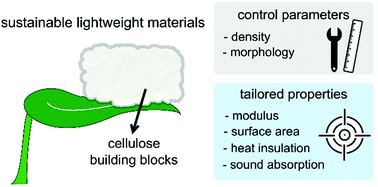
Green Chem., 2021,23, 3542-3568
https://doi.org/10.1039/D1GC00326G
Applied biocatalysis beyond just buffers – from aqueous to unconventional media. Options and guidelines
It's not only lipases which can be applied in alternative solvent systems to meet industrial and environmental demands. At the hand of case studies and flowcharts this review quickly shows what solvent systems are viable.
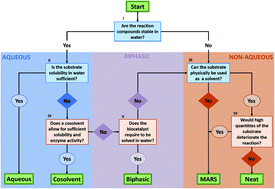
Green Chem., 2021,23, 3191-3206
https://doi.org/10.1039/D1GC00561H
Tandem catalysis: one-pot synthesis of cyclic organic carbonates from olefins and carbon dioxide
One-pot tandem procedures represent a green and general approach towards process intensification as they are intrinsically simpler compared to the conventional stepwise processes, do not require intermediate isolation and are generally more efficient.

Green Chem., 2021,23, 1921-1941
https://doi.org/10.1039/D0GC04168H
Biological carbon fixation: a thermodynamic perspective
Changes of Gibbs free energy made insights into the carbon fixation pathways from thermodynamic perspective.

Green Chem., 2021,23, 7852-7864
https://doi.org/10.1039/D0GC03493B
Hydrothermal amination of biomass to nitrogenous chemicals
This review presents the conversion routes, processing strategies, state-of-the-art technical advances, challenges and perspectives in hydrothermal amination of N-rich biomass sources and N-free biomass feedstocks to nitrogenous chemicals.

Green Chem., 2021,23, 6675-6697
https://doi.org/10.1039/D1GC02505H
Continuous flow asymmetric synthesis of chiral active pharmaceutical ingredients and their advanced intermediates
This review surveys continuous flow approaches for the synthesis of chiral APIs and their advanced stereogenic intermediates, covering the utilization of biocatalysis, organometallic catalysis and metal-free organocatalysis to introduce asymmetry.

Green Chem., 2021,23, 6117-6138
https://doi.org/10.1039/D1GC01615F
Recycling of spent lithium-ion batteries in view of green chemistry
This research could provide a guideline for implementing green chemistry principles into spent LIBs recycling.

Green Chem., 2021,23, 6139-6171
https://doi.org/10.1039/D1GC01639C
Microplastics from textile origin – emission and reduction measures
Emission of fibrous microplastics from synthetic textile washing to the aquatic environment via wastewater treatment plant and reduction measures.
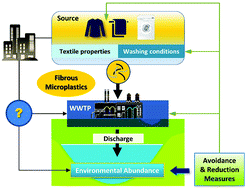
Green Chem., 2021,23, 5247-5271
https://doi.org/10.1039/D1GC01589C
A review of thermal and thermocatalytic valorization of food waste
A review of thermal and thermocatalytic valorization of food waste into biobased platform chemicals. A detailed summary of process level and fundamental kinetic insights are provided towards upgrading FW to useful products for a circular economy.
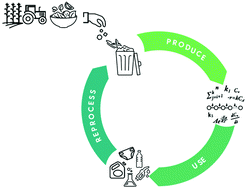
Green Chem., 2021,23, 2806-2833
https://doi.org/10.1039/D1GC00536G
CO2 valorisation towards alcohols by Cu-based electrocatalysts: challenges and perspectives
Advances and strategies of electrocatalytic CO2 conversion to alcohols on Cu-based catalysts is assessed with an outlook of current challenges for a practical application of this technology.

Green Chem., 2021,23, 1896-1920
https://doi.org/10.1039/D0GC03334K
A review on key design and operational parameters to optimize and develop hydrothermal liquefaction of biomass for biorefinery applications
This paper summarizes the existing hydrothermal liquefaction process literature and reveals the effect of process parameters on the bio-crude yield.
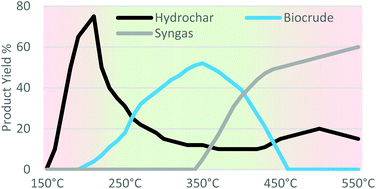
Green Chem., 2021,23, 1404-1446
https://doi.org/10.1039/D0GC04092D
Oxidative dehydrogenation of light alkanes with carbon dioxide
In this critical review, the recent advances of the CO2-assisted catalytic dehydrogenation of light alkanes are summarized.
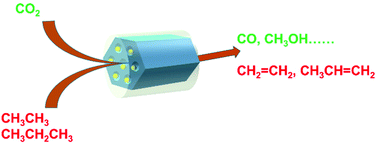
Green Chem., 2021,23, 689-707
https://doi.org/10.1039/D0GC03705B
Route efficiency assessment and review of the synthesis of β-nucleosides via N-glycosylation of nucleobases
Instead of focusing on maximizing glycosylation yield, future syntheses of nucleosides via N-glycosylation should aim to use shorter routes, fewer protecting groups and less chromatography to achieve more efficient and sustainable processes, as this E-factor analysis reveals.

Green Chem., 2021,23, 37-50
https://doi.org/10.1039/D0GC02665D
Stepwise benzylic oxygenation via uranyl-photocatalysis
Stepwise oxygenation of benzylic molecules with uranyl photocatalysis was realized under ambient conditions. The accuracy of the stepwise oxygenation was ensured by the tunability of redox potential in uranyl photocatalysis through solvents and additives.

Green Chem., 2022,24, 124-129
https://doi.org/10.1039/D1GC04042A
Ionic liquids or eutectic solvents? Identifying the best solvents for the extraction of astaxanthin and β-carotene from Phaffia rhodozyma yeast and preparation of biodegradable films
Cholinium-based eutectic solvents as a promising and sustainable solution for the extraction of carotenoids from microbial biomass and the preparation of biodegradable active biofilms.

Green Chem., 2022,24, 118-123
https://doi.org/10.1039/D1GC03521E
OrganoSoxhlet: circular fractionation to produce pulp for textiles using CO2 as acid source
Organosolv pulping performed in a high-pressure Soxhlet extractor using carbon dioxide as a mild and recyclable acid is described.

Green Chem., 2021,23, 9401-9405
https://doi.org/10.1039/D1GC03079E
Photo-induced direct alkynylation of methane and other light alkanes by iron catalysis
An iron-catalysed photoredox alkynylation of methane, ethane, and other light alkanes is developed as a concise and efficient approach to valuable internal alkyne synthesis.

Green Chem., 2021,23, 9406-9411
https://doi.org/10.1039/D1GC03388C
Soft and effective detoxification of a VX simulant in a nylon 3D printed basic flow reactor
A flow reactor was designed, manufactured by 3D printing, and modified to promote the selective ethanolysis of a chemical warfare agent VX surrogate.

Green Chem., 2021,23, 7522-7527
https://doi.org/10.1039/D1GC01961A
N-Butylpyrrolidone (NBP) as a non-toxic substitute for NMP in iron-catalyzed C(sp2)–C(sp3) cross-coupling of aryl chlorides
Although iron catalyzed cross-couplings show extraordinary promise in reducing the environmental impact of more toxic metals, one of the main challenges is the use of reprotoxic NMP (NMP = N-methylpyrrolidone) as the key ligand.
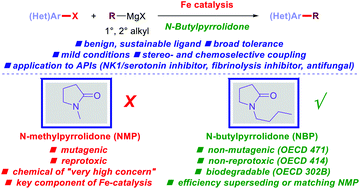
Green Chem., 2021,23, 7515-7521
https://doi.org/10.1039/D1GC02377B
Grow it yourself composites: delignification and hybridisation of lignocellulosic material using animals and fungi
We hybridised lignocellulose microfibres with a fungal derived nanoscale chitin-β-glucan network produce hydrophobic papers with improved tensile properties.
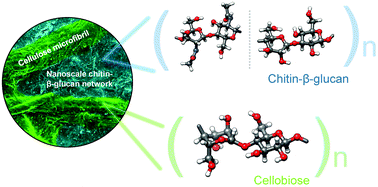
Green Chem., 2021,23, 7506-7514
https://doi.org/10.1039/D1GC01835C
Selective C(sp3)–H activation of simple alkanes: visible light-induced metal-free synthesis of phenanthridines with H2O2 as a sustainable oxidant
A visible light-induced metal-free C(sp3)–H phenanthridinylation of simple alkanes with isonitrile is developed with H2O2 as a terminal sustainable oxidant.

Green Chem., 2021,23, 6926-6930
https://doi.org/10.1039/D1GC02670D
Constructing single Cu–N3 sites for CO2 electrochemical reduction over a wide potential range
A strategy was developed to obtain Cu–N3 sites in a Cu–N-doped carbon-based catalyst by utilizing metal ionic liquid as a precursor. The catalyst showed a high CO faradaic efficiency and a high current density within a wide potential range.

Green Chem., 2021,23, 5461-5466
https://doi.org/10.1039/D1GC01914G
A micro-spray-based high-throughput screening system for bioplastic-degrading microorganisms
A facile and efficient method for bioplastic degrading microorganism screening based on a micro-spray system is developed. The potential of this approach was validated by isolating various bioplastic degrading bacteria from the activated sludge.

Green Chem., 2021,23, 5429-5436
https://doi.org/10.1039/D1GC01916C
Flow-through solvolysis enables production of native-like lignin from biomass
Flow-through solvolysis offers an opportunity to limit lignin condensation reactions that prevent isolation of native lignin in biomass processing, thus allowing for the study of intrinsic lignin properties and steady-state lignin depolymerization.

Green Chem., 2021,23, 5437-5441
https://doi.org/10.1039/D1GC01591E
Photocatalytic carbon dioxide reduction coupled with benzylamine oxidation over Zn-Bi2WO6 microflowers
Here, we demonstrate for the first time the formation of Zn-Bi2WO6 microflowers for the simultaneous photocatalytic CO2 reduction and benzylamine oxidation in absence of sacrificial agent or oxidant, and achieve high efficiency of energy utilization.

Green Chem., 2021,23, 2913-2917
https://doi.org/10.1039/D1GC00676B
Protecting-group-free S-glycosylation towards thioglycosides and thioglycopeptides in water
A facile and green S-glycosylation method is developed, in which Ca(OH)2 promoted the coupling of protection-group-free fluoride donors and thiol acceptors in water, affording various thioglycosides and thioglycopeptides.

Green Chem., 2021,23, 2907-2912
https://doi.org/10.1039/D1GC00098E
Convenient synthesis of spiroindolenines from tryptamine-derived isocyanides and organic azides by cobalt catalysis in pure water
A sustainable synthesis of spiroindolenines from tryptamine-derived isocyanides and organic azides in pure water was described.

Green Chem., 2021,23, 2619-2623
https://doi.org/10.1039/D1GC00270H
Fenton chemistry enables the catalytic oxidative rearrangement of indoles using hydrogen peroxide
The discovery of iron(II) bromide and cerium(III) bromide as a bifunctional catalyst enables the oxidative rearrangement of indoles with hydrogen peroxide as the terminal oxidant.

Green Chem., 2021,23, 2300-2307
https://doi.org/10.1039/D1GC00297J
Biodegradable nanocomposite of poly(ester-co-carbonate) and cellulose nanocrystals for tough tear-resistant disposable bags
The “3C-tuning” via chemical designing and nanocompositing upgrades mechanical performances of poly(butylene succinate) to a remarkable level with accelerated biodegradation.

Green Chem., 2021,23, 2293-2299
https://doi.org/10.1039/D0GC04072J
Aqueous chemoenzymatic one-pot enantioselective synthesis of tertiary α-aryl cycloketones via Pd-catalyzed C–C formation and enzymatic C![[double bond, length as m-dash]](https://www.rsc.org/images/entities/char_e001.gif) C asymmetric hydrogenation
C asymmetric hydrogenation
Aqueous chemoenzymatic two-step one-pot enantioselective synthesis of tertiary α-aryl cycloketones via Pd-catalyzed C–C formation and enzymatic C![[double bond, length as m-dash]](https://www.rsc.org/images/entities/char_e001.gif) C asymmetric hydrogenation was developed.
C asymmetric hydrogenation was developed.
![Graphical abstract: Aqueous chemoenzymatic one-pot enantioselective synthesis of tertiary α-aryl cycloketones via Pd-catalyzed C–C formation and enzymatic C [[double bond, length as m-dash]] C asymmetric hydrogenation](/en/Image/Get?imageInfo.ImageType=GA&imageInfo.ImageIdentifier.ManuscriptID=D1GC00372K&imageInfo.ImageIdentifier.Year=2021)
Green Chem., 2021,23, 1960-1964
https://doi.org/10.1039/D1GC00372K
Activation of hydrogen peroxide by the nitrate anion in micellar media
Surface-active imidazolium nitrates activate hydrogen peroxide, which enables the epoxidation of olefins. The micelles solubilise the substrate in the aqueous oxidant phase and allow for simple product separation and catalyst recycling.

Green Chem., 2021,23, 1965-1971
https://doi.org/10.1039/D0GC03497E
Synthesis of dense porous layered double hydroxides from struvite
An atom economic synthesis of dense porous layered double hydroxides (SLDHs) using an undesirable waste in wastewater treatment plants (struvite) is reported. The obtained SLDHs show high specific surface area, large pore volume and high density.
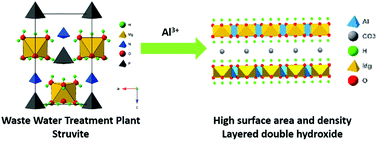
Green Chem., 2021,23, 1616-1620
https://doi.org/10.1039/D0GC04410E
(Hexamethylbenzene)Ru catalysts for the Aldehyde-Water Shift reaction
The Aldehyde-Water Shift (AWS) reaction uses H2O as a benign oxidant to convert aldehydes to carboxylic acids, producing H2, a valuable reagent and fuel, as its sole byproduct.

Green Chem., 2021,23, 1609-1615
https://doi.org/10.1039/D0GC03809A
Halogen-free fixation of carbon dioxide into cyclic carbonates via bifunctional organocatalysts
Bifunctional organocatalysts bearing diamine and carboxylic acid groups efficiently catalyze the coupling reaction of CO2 with epoxides under halogen-free conditions due to a synergy effect.

Green Chem., 2021,23, 1147-1153
https://doi.org/10.1039/D0GC03846F
A sustainable and scalable multicomponent continuous flow process to access fused imidazoheterocycle pharmacophores
A sustainable flow process has been established for the application of the Gröebke–Blackburn–Bienaymé reaction for access to high-value fused heteroaromatics.

Green Chem., 2021,23, 280-287
https://doi.org/10.1039/D0GC03675G
Transition-metal-free synthesis of thiazolidin-2-ones and 1,3-thiazinan-2-ones from arylamines, elemental sulfur and CO2
A multi-component reaction of arylamines, elemental sulfur and CO2 (1 atm) is reported to generate valuable thiazolidin-2-ones and 1,3-thiazinan-2-ones in moderate to good yields under transition-metal-free reaction conditions.

Green Chem., 2021,23, 274-279
https://doi.org/10.1039/D0GC03723K
Palladium-catalyzed synthesis of 4-cyclohexylmorpholines from reductive coupling of aryl ethers and lignin model compounds with morpholines
4-Cyclohexylmorpholines could be efficiently synthesized from reductive coupling of aryl ethers (including the typical lignin model compounds) with morpholines over Pd/C without using any acidic additives.

Green Chem., 2021,23, 268-273
https://doi.org/10.1039/D0GC03188G
Formation of pharmaceutical salts and cocrystals via vapour-assisted tumbling (VAT) – a solvent efficient process
Crystallisations on both the academic and industrial scale often use large volumes of solvent.

Green Chem., 2022,24, 1505-1514
https://doi.org/10.1039/D1GC03683A
Catalytic upcycling of PVC waste-derived phthalate esters into safe, hydrogenated plasticizers
Recycling of end-of-life polyvinyl chloride (PVC) calls for solutions to deal with the vast amounts of harmful phthalate plasticizers that have historically been incorporated in PVC.
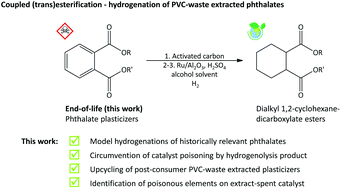
Green Chem., 2022,24, 754-766
https://doi.org/10.1039/D1GC03864H
Identification and quantification of lignin monomers and oligomers from reductive catalytic fractionation of pine wood with GC × GC – FID/MS
Comprehensive HT-GC × GC FID/MS enables reliable detection and quantification of RCF lignin monomers, dimers and, trimers.

Green Chem., 2022,24, 191-206
https://doi.org/10.1039/D1GC03822B
Formation of a nylon-6 micro/nano-fiber assembly through a low energy reactive melt spinning process
Caprolactam anionic polymerization was used to achieve suitable melt viscosity for drawing into ultra-fine fibers. The process temperature was well below that of the melting point of nylon 6.

Green Chem., 2022,24, 176-190
https://doi.org/10.1039/D1GC03468E
Engineering cellulose into water soluble poly(protic ionic liquid) electrolytes in the DBU/CO2/DMSO solvent system as an organocatalyst for the Knoevenagel condensation reaction
Linear water soluble cellulosic poly(protic ionic liquid) electrolytes were facilely and atom economically prepared after dissolution of cellulose in a DBU/CO2/DMSO solvent system, and can be used as an efficient catalyst for the Knoevenagel condensation reaction in water.

Green Chem., 2021,23, 9922-9934
https://doi.org/10.1039/D1GC03148A
Water-removable ynamide coupling reagent for racemization-free syntheses of peptides, amides, and esters
A water-removable ynamide coupling reagent for racemization-free construction of amide and ester bonds was reported. No column chromatography purification was involved because acidic aqueous work-up removed the byproduct completely.

Green Chem., 2021,23, 9916-9921
https://doi.org/10.1039/D1GC03498G
A class of surfactants via PEG modification of the oleate moiety of lactonic sophorolipids: synthesis, characterisation and application
A family of new bio-based surfactants have been prepared via the epoxidation and PEGylation of lactonic sophorolipids. This modification enhances their performance and diversifying their potential applications.

Green Chem., 2021,23, 9906-9915
https://doi.org/10.1039/D1GC02247D
Chrome-free tanning agent based on epoxy-modified dialdehyde starch towards sustainable leather making
As a biomass tanning agent, epoxy-modified dialdehyde starch can significantly improve the comprehensive properties of finished leather, and is expected to be a novel sustainable chrome-free tanning agent replace traditional tanning agent.
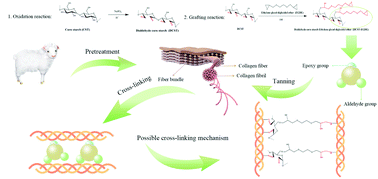
Green Chem., 2021,23, 9693-9703
https://doi.org/10.1039/D1GC03472C
Plastic waste to drug intermediate: targeted cleavage of C–O bonds in polyphenylene oxide to 3,5-dimethyl phenol
Starting from polyphenylene oxide plastic, the selective production of 3,5-dimethyl phenol as an important pharmaceutical intermediate was achieved over Ru/Nb2O5, which is the first example of integrating waste plastic into the drug supply chain.
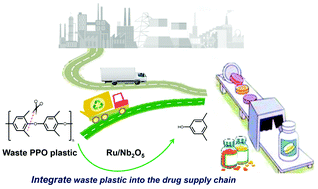
Green Chem., 2021,23, 9640-9645
https://doi.org/10.1039/D1GC02767K
Developing iron-based anionic redox couples for thermogalvanic cells: towards the replacement of the ferricyanide/ferrocyanide redox couple
Thermogalvanic devices require anionic and cationic species; the rational development of safe(r) iron-based anionic redox couples was explored.
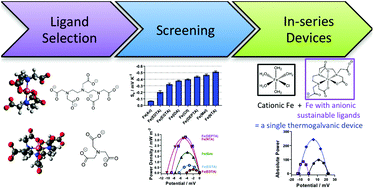
Green Chem., 2021,23, 8901-8915
https://doi.org/10.1039/D1GC02989D
Micellar catalysis of the Suzuki Miyaura reaction using biogenic Pd nanoparticles from Desulfovibrio alaskensis
Nano-micelles meet biogenic Pd nanoparticles at the cell membrane promoting Suzuki Miyaura coupling reactions under mild conditions.

Green Chem., 2021,23, 8886-8890
https://doi.org/10.1039/D1GC02392F
Milligram-scale, temperature-controlled ball milling to provide an informed basis for scale-up to reactive extrusion
It is demonstrated that temperature-controlled ball milling is a key component for scaling up small-scale mechanochemistry.

Green Chem., 2021,23, 8501-8509
https://doi.org/10.1039/D1GC02174E
Solvent effect on xylose-to-furfural reaction in biphasic systems: combined experiments with theoretical calculations
The promotion efficiency of organic solvents in biphasic systems for furfural production is influenced by four factors, and the most important factor is the solvation free energy of furfural (ΔGsol-ff) in organic solvents.

Green Chem., 2021,23, 8510-8518
https://doi.org/10.1039/D1GC02812J
Bimetallic RuNi nanoparticles as catalysts for upgrading biomass: metal dilution and solvent effects on selectivity shifts
Core–shell RuNi catalysts are prepared from organometallic complexes and PVP as stabilizers under one-pot conditions. The synergistic effect between Ru and Ni activity in furfural hydrogenation depends on the nanoparticle composition.

Green Chem., 2021,23, 8480-8500
https://doi.org/10.1039/D1GC02154K
Environment-friendly and efficient synthesis of 2-aminobenzo-xazoles and 2-aminobenzothiazoles catalyzed by Vitreoscilla hemoglobin incorporating a cobalt porphyrin cofactor
In this study, an environment-friendly and efficient artificial Vitreoscilla hemoglobin (VHb) for the synthesis of 2-aminobenzoxazoles and 2-aminobenzothiazoles has been reported.

Green Chem., 2021,23, 8047-8052
https://doi.org/10.1039/D1GC02533C
Furfurylation protects timber from degradation by marine wood boring crustaceans
We fed furfurylated and control wood to gribble. Our results imply that furfurylation of wood protects against degradation by gribble without the reliance on broad spectrum biocides and can reduce costs associated with damaged wooden structures.

Green Chem., 2021,23, 8003-8015
https://doi.org/10.1039/D1GC01524A
A rigid plant oil-based thermoset with a furfural-derived cyclobutane cross-linker
Furfural-based hardener for cross-linking flexible epoxidized linseed oils leading to bulky biobased thermosets with high hardness and good ultimate strength.

Green Chem., 2021,23, 8053-8060
https://doi.org/10.1039/D0GC04323K
Chemo- and regioselective hydroformylation of alkenes with CO2/H2 over a bifunctional catalyst
Combining CO2 and H2 for chemo- and regioselective hydroformylation of alkenes has been realized. The key to success is the use of a bifunctional Rh/PTA catalyst, which can ingeniously combine efficient CO2 hydrogenation and hydroformylation.
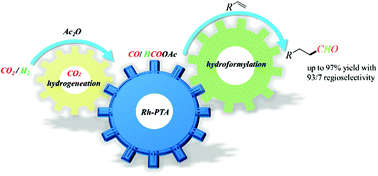
Green Chem., 2021,23, 8040-8046
https://doi.org/10.1039/D0GC03913F
Direct oxidative carboxylation of terminal olefins to cyclic carbonates by tungstate assisted-tandem catalysis
Cyclic organic carbonates can be prepared directly from various terminal olefins via green tandem tungstate-based catalysis.

Green Chem., 2021,23, 7609-7619
https://doi.org/10.1039/D1GC02603H
Boosting NH3 production from nitrate electroreduction via electronic structure engineering of Fe3C nanoflakes
Optimized electronic structures of Fe3C/NC boosted NH3 production from nitrate electroreduction, which proceeded via a stepwise NO3−–NO2−–NH3 pathway.

Green Chem., 2021,23, 7594-7608
https://doi.org/10.1039/D1GC01913A
Ball-milling synthesis of sulfonyl quinolines via coupling of haloquinolines with sulfonic acids
A practical and environment-friendly methodology for the construction of sulfonyl quinolines through ball milling promoted coupling of haloquinolines with sulfonic acid under metal-, base-, solvent- and additive-free conditions was developed.

Green Chem., 2021,23, 7589-7593
https://doi.org/10.1039/D1GC02015C
Ionozyme: ionic liquids as solvent and stabilizer for efficient bioactivation of CO2
The first developed ionozyme that combines a discovered novel FDHPa with a synergistic ionic microenvironment enables efficient bioactivation of CO2.
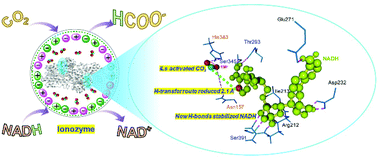
Green Chem., 2021,23, 6990-7000
https://doi.org/10.1039/D1GC02503A
Convenient C(sp3)–H bond functionalisation of light alkanes and other compounds by iron photocatalysis
A practical and green iron-catalyzed photoredox system for C–H functionalization of ethane, propane, and other light alkanes was developed.

Green Chem., 2021,23, 6984-6989
https://doi.org/10.1039/D1GC01563J
About this collection
Welcome to our online rolling collection of the hottest work published in Green Chemistry. Here we feature all of the 2021 articles highlighted as HOT by our Editors and Referees. Congratulations to all those featured!